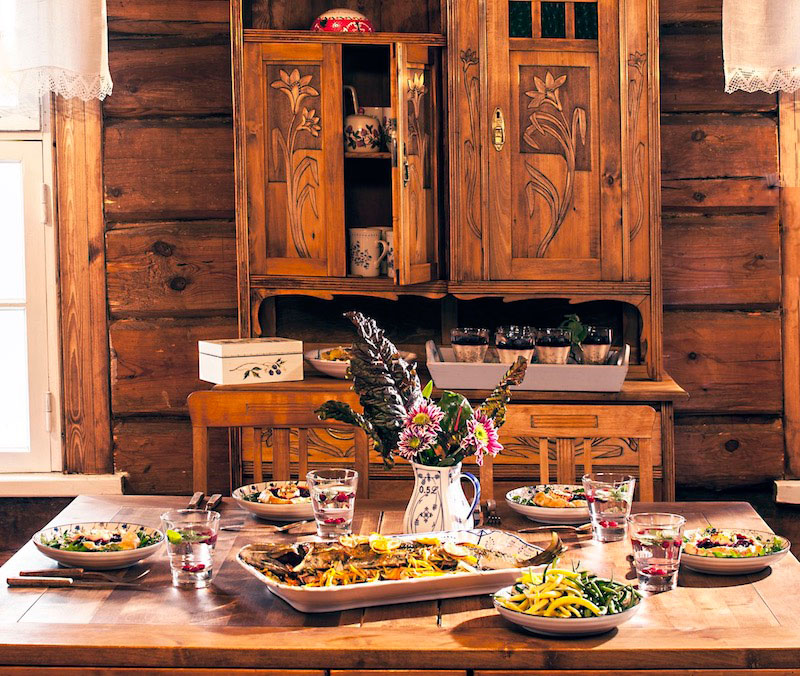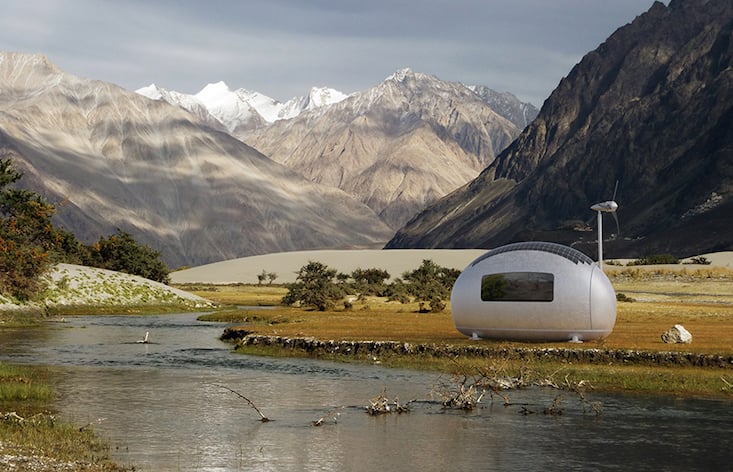These women are turning traditional Estonian cuisine into sustainable business success stories

The post-Soviet boom years saw many Estonians leave their rural roots behind to seek their fortune. Now, many are turning back to the land and reimagining entrepreneurship in the process. We met six female business owners using the nation’s natural bounty to serve traditional food in exciting new ways.
“Rahulolu means being satisfied or content with life beyond just financial success. This is what we Estonians are increasingly searching for.” Elin grew up in Tallinn but moved to rural south-eastern Estonia two years ago to work for the regional Setomaa tourism board and live in a forest cabin with no electricity or Wi-Fi. “Rahulolu is the Estonian hygge,” she continues. “The kind of happiness you get when you don’t want more, because everything surrounding you — nature, people — makes you happy.” Elin is helping me get to grips with an exciting new trend in Estonia: sustainable food entrepreneurs making the most of the country’s natural bounty.
Following the post-Soviet economic boom — and subsequent crash — when many provincial Estonians moved to Tallinn or further afield to seek their fortune, many are now retracing their steps in search of a better work-life balance. Outside the capital is a country of forests, islands, and many opportunities to pursue sustainable business — with food a particularly promising outlet. We spoke to six female entrepreneurs who have put their love of good food and hospitality to work in rural Estonia to better their communities and create their own brand of rahulolu.
Kaidi Kerdt
Owner of Kirsi Talo guesthouse
Image: Toomas Tuul
“They call me a crazy woman around here,” says Kaidi Kerdt. “But I had to come back here to honour my grandmother Ode’s wish to keep the traditions going.” Kerdt’s family comes from Setomaa, a region in the south-east of Estonia, close to Russia. Setomaa has its own unique traditions — such as the UNESCO-protected leelo singing style — and a troublesome past: Setos were split across the border with Russia following the collapse of the Soviet Union. Kerdt spent many years living in Tallinn and travelling the world as a sommelier. Then, three years ago, she bought a set of dilapidated Seto peasant-style buildings and set to renovating them, including an adjacent smoke sauna (another UNESCO-listed tradition).
“I wanted people to experience the Seto way of life in the most authentic way possible,” she explains. The renovation process was hard; Kerdt and her husband had to self-fund most of the works themselves, whilst retaining as many original elements as possible and employing only local people. Recently, though, they managed to get some EU funding. “Now I should be able to bring more people here, to organise singing and food events for local children and families,” she says excitedly. Kerdt’s mother is a chef living locally, so together they are now bringing back to life some of the recipes of grandmother Ode, like the cherry biscuits we eat at our breakfast table.
“This place has a special aura. After years of travelling, I’m finally exactly where I should be.” Kerdt looks around her little green kingdom and puts her hands on her belly — she is expecting her second child.
Sirje Kruusamäe
Owner and chef at Maagõkõnõ
Image: Toomemäe talu kodurestoran Maagõkõnõ/Facebook
Maagõkõnõ means “poppy” in the Seto language, and Sirje Kruusamäe, with her dark red hair, almost resembles the flower when she greets us with a warm hug. Welcoming us into her light and spacious home filled with jars and bottles of home-made goodies, she explains: “Hospitality is very important to us in Setomaa.” Kruusamäe had worked for many years locally, as a school cook and then at the nearby Värska sanatorium. Eventually, she gave it all up to set up her own kodurestoran, or home restaurant, at a time when the concept was becoming popular across Estonia as a way of bringing tourism to rural areas. “I was longing for a balance of creativity and work,” she says. “These days, I can experiment at will. They [the customers] just have to eat it all!” she giggles, clearly someone who loves what she does and knows that her food is good.
Kruusamäe combines Estonian, Russian, and Soviet cooking, with some Seto traditions and a few modern touches — like the traditional Seto serving sõir, a ricotta-like dish of cream cheese, eggs, and butter, normally served sliced and cold. Kruusamäe serves us the cheese warm, alongside home-made apple and chilli jam. She also cooks us some mashed potatoes with local smoked pork, alongside pan-fried fish from the Peipsi lake and a dessert of kama — an ancient Estonian cereal mix — decorated with young pine cones dipped in chocolate. “Some things we used to eat are now called gourmet,” she explains with the lightness of someone not overly burdened by tradition.
Image: Nautse Mihkli talu/Facebook
“On this island you really feel you’ve tasted Estonia,” Ingrem Raidjõe says as she serves us pan-friend local garfish (a delicious, delicate needlefish with blue bones), roasted vegetables, and rhubarb cake. The food that she makes in her guesthouse on Muhu island is simple, highly seasonal, with a lot of wild Baltic meat and fish, plus the occasional “exotic” flavour she picks up from her travels. “I’ve just come back from kite surfing in Madagascar,” she beams. “I always carry a jar of nutmeg or pepper in my bag. Just in case.”
The island of Muhu was a no-go zone until the 1990s — it was considered too much of a risk to let ordinary Estonians travel to the outer border of the Soviet Union. After independence, the wild nature and solitude here started to attract Estonians from the mainland, who built summer houses or even moved permanently. Raidjõe’s parents did just that, eventually setting up an ostrich farm nearby, which became a popular attraction for visitors. Raidjõe knew how to cook with unusual meats —her husband at the time was a hunter — and begun to use the delicious, lean ostrich meat for the events, which eventually turned into a business as word gradually spread. She has had to renovate her house to accommodate her many customers. “I am impossibly bad at marketing!” she admits. “But people just… come.”
Airi Hallik-Konnula
Manager at Urvaste Kama
Kama — flour made with roasted and ground cereals and legumes — is an ancient peasant dish, largely forgotten or used as a substitute for chocolate during Soviet times. In the last decade, it has been “re-discovered” and hailed as the Estonian national dish. “You can buy factory made kama in any supermarket,” explains Airi Hallik-Konnula, a local military guard by day and a charity board member by night. “We had the idea to look into the history of kama and make it in our community kitchen, using a small stone grinder.”
Hallik-Konnula didn’t grow up in this corner of southern Estonia — love brought her to Urvaste. Her husband is a famous writer and poet who lives here. “His mother set up this not-for-profit organisation to fight for the local wetlands and raise funds to restore the village hall,” she recounts. Urvaste is a small but tight-knit community, and having a physical space to meet and educate people about local culture and crafts was very important. “We realised quickly that we needed financial independence to keep going. That’s where the idea to make and sell kama flour came from.”
Highly nutritious with a nutty flavour, kama often consists of peas, barley, wheat, and rye, and was traditionally eaten with sour milk or kefir during the hay-making season. These days, it is also used in desserts, smoothies, and even truffles. In Urvaste, they make several unique varieties, including buckwheat and oats. One popular blend even has Hallik-Konnula’s husband’s face on the pack.
Aime Tulp
Berry farmer, Ostrova Mari
Image: @Ostrova/Ostrova Mari/Facebook
Aime Tulp’s story is one of quiet industriousness. Born seven kilometres from the house that now serves as her business headquarters, she worked as an accountant for an international conglomerate in Tallinn for many years, while keeping a summer house in Setomaa. She started growing blackcurrants on a whim after hearing that researchers had declared them the crop most suited to the local soil. She left her job, set up Ostrova Mari with her husband, and several years later they’ve grown into a substantial operation. Around 50 per cent of the local soil is certified organic, and Tulp is following suit with her own land.
We sit down to a table laden with blackcurrant goodies: jam to go with the rhubarb cake Tulp has just made, lemonades, glöggs (a non-alcoholic version of mulled wine, very popular here in winter). Berries alone weren’t enough to get by on, so they started producing added-value products, many of which are now sold in big stores in Tallinn.
“We just advertise on our Facebook page, telling people that we’ll be in this parking lot on this day, and people turn up,” she says. Many of Tulp’s customers are young families increasingly interested in ecological, home-grown food. “These days, I often work long hours. But now I’m the king of my own time. I feel everything is possible if you decide it is.”
Image: Kerti Vissel
“In the countryside you have the freedom to make your own mistakes,” exclaims Kerti Vissel with a radiant smile. Kerti and her two sisters, Triin and Kadri, grew up nearby, amongst cows, pigs, and abundant allotments. Like many others, they left to study and work, only to be drawn back to nature — and to the mission of feeding local communities with local food at their Kolme Sõsara Hõrgutised establishment. “We have all this wonderful produce around here, why take it all to the fancy restaurants in Tallinn?” she reasons.
The sisters meet us in the meadow outside Triin’s home: a Nordic version of the little house on the prairie, filled with light, wooden floors, and a huge oven. The lunch they serve us tells their story: a salad of home-grown lettuce with a poached egg from the parents’ hens, spelt bread made by Triin, a cheesecake made by Kerti with Urvaste oat kama and rhubarb in season. Lots of flowers, some edible. All so pretty.
The girls originally catered for events and parties, whilst also feeding local schools, and are now planning on a more permanent establishment in the village next door: Kollase Maja Kohvik, or “The Yellow House Café”. Maybe it’ll open in September, maybe in October; maybe four days a week, maybe five. “There is no strict plan,” smiles Kadri. The menus will be created daily, inspired by the surrounding nature and community. “Dad brings huge baskets of chanterelles in the autumn. The mushrooms are legendary here,” the girls muse, with a quiet confidence not of business women but of artists with a vision.


